Eutrophication process
Regenerative Infrastructures: Symbiotic Waterscapes
Algal blooms and the reduction of the seabed’s oxygen have a particularly negative impact on the Baltic Sea, caused by the eutrophication process. The process of eutrophication involves the gradual enrichment of a body of water, or portions of it, with minerals and nutrients, especially nitrogen and phosphorus. As a result of eutrophication catalysed by climate change, marine biodiversity and fish stocks suffer also reducing the welfare of citizens.
Despite the fact that nutrient leakage has decreased in recent years, 97% of the surface of the Baltic Sea is still affected by eutrophication (HELCOM 2017). In Sweden, agriculture is the source of almost half of the nitrogen and phosphorus released into the environment. (Swedish Board of Agriculture 2013) Taking this as an emergency call, research aims to investigate on how architecture can become a catalyst for environmental regeneration, resulting in a net positive outcome. The research refers to the theory of regenerative design, which has received particular attention in recent years in addressing constraints of sustainability. The proposal is defined through three sections: bio-material, system, and landscape, which allow us to think about Baltic Sea regeneration through the design in a holistic way, while also implementing regeneration through different approaches. The research envisions a regenerative approach to the Baltic Sea by introducing a network of interventions operating on the transitional zone between agricultural fields and rivers transmitting nutrient pollution to the sea as part of its catchment basin. Research speculates on how to reduce excessive nutrient enrichment in soil, water and decrease anthropogenic nutrient loading, while engaging with the local community through eco-recreation. Enlisting nature as a guide and referring to biomimicry as the model, the network of various functional zones suggests bioremediation of polluted agricultural fields. At the same time proposal provide alternative platforms for cultivation and recreational infrastructures closely related to an adjusted urban fabric applied in the territory of Umeå in Sweden.
Studio 12: Man-Made Geographies: From Planetary to Molecular
Studio Teachers: Alejandro Haiek Coll (Studio Coordinator), Johanna Runge, Raffaelle Enrichiello
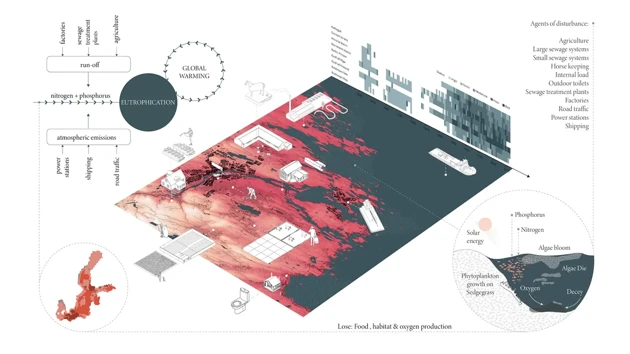
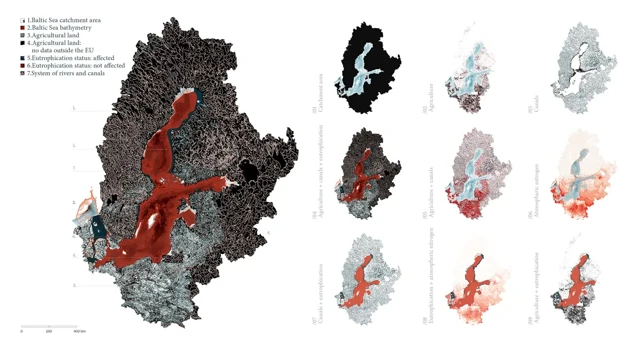
Baltic Sea Mapping
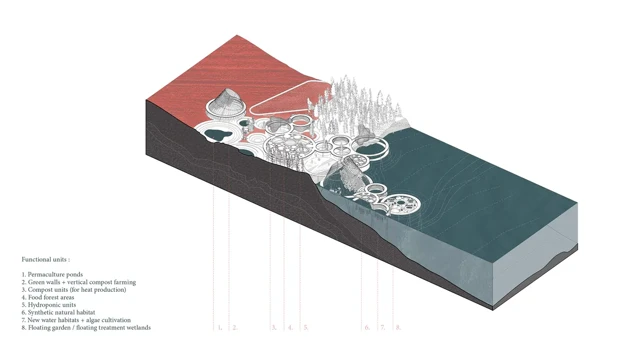
Regenerative infrastructure
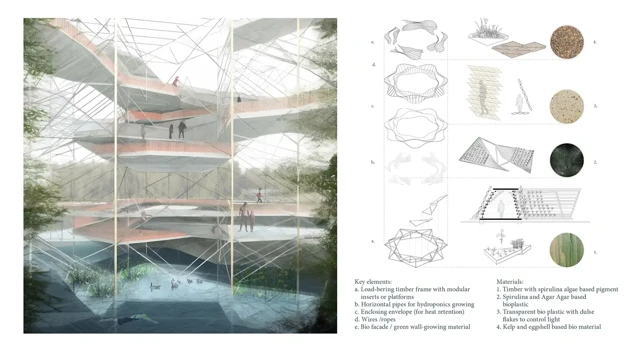
Proposed regenerative infrastructure, sectional drawing
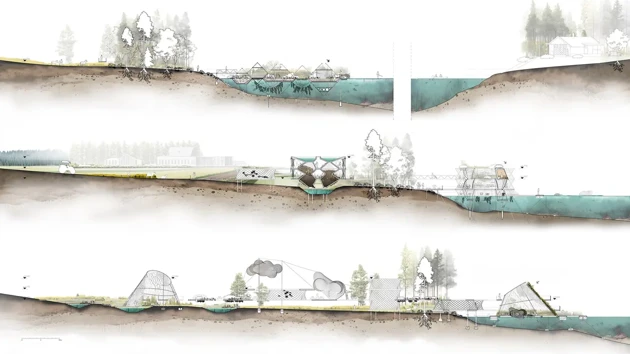
Regenerative unit’s construction, bio-material implementation
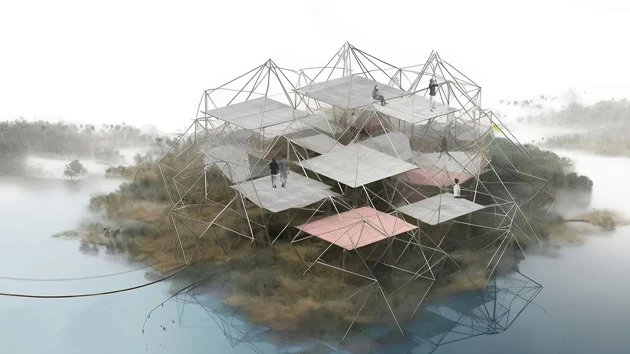
Public space as part of regenerative infrastructure





